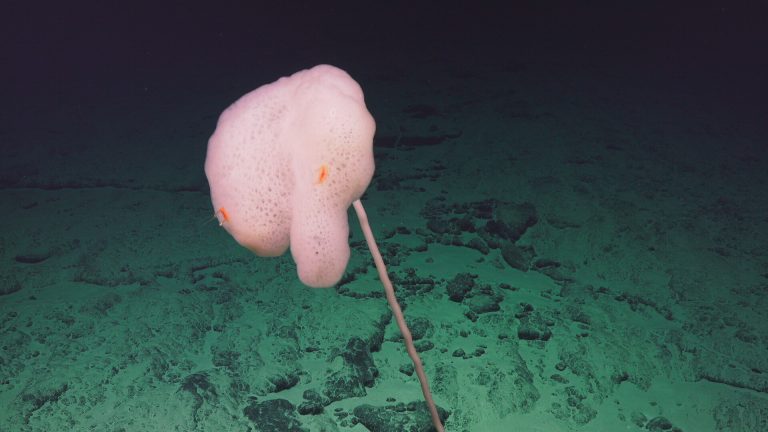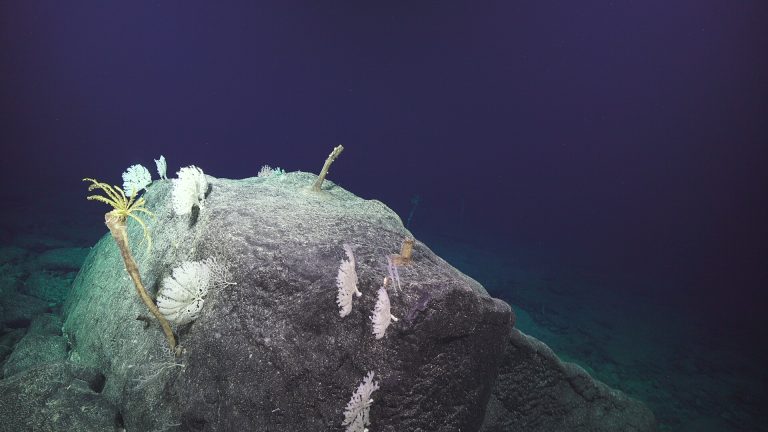Rising up and gaining height above the seafloor is the name of the game for sessile deep-sea animals. You can see this growth strategy below, in the glass sponge of the family Rossellidae. It has a narrow, 30cm long stalk and a bulbous top. Getting higher into the water column – even if only a few centimeters – offers great advantage for such filter feeders that collect their food from the currents.

“Deep‐sea corals” and “deep‐sea sponges” are defined as corals or sponges that do not depend upon symbiotic algae and light for their metabolic requirements, and generally occur at depths below 50 m (NOAA 2010).”

It is Always Better At The Top
Near the bottom of the ocean, there is often virtually no movement of water, especially in rocky areas where current flow is impeded. In order to get into the current, sponges and corals often grow on rock outcroppings. Although some corals and sponges attach to the top of the rocks, more often they form a line just behind or beneath the ridgeline. As with a boulder in a flowing river, the water currents over the top are accelerated, and then create an eddy behind the boulder. In the deep sea, these slightly faster currents may not allow larvae to settle out and attach to the top of rocks. However, just behind the rock, in the direction of current flow, there appears to be an optimal location for filtering the flow of water. Currents that are eddying behind a boulder may provide more than one opportunity for the sponge or coral to filter the swirling water and capture any plankton the currents carry.
High-Rise Condos
Corals and sponges that rise above the seafloor also provide habitat, and some protection for other animals like brittle stars, crabs, worms, and ctenophores that benefit from more current flow. The two reddish animals in the glass sponge picture at top are ctenophores, and the filaments are used to capture prey, similar to the wise fisherman who carefully stakes out the best spot from which to cast his line. Often these “prime real estate” locations are loaded with a variety of organisms. It is unclear whether the sponge or coral gets any benefit from the social climbers.


